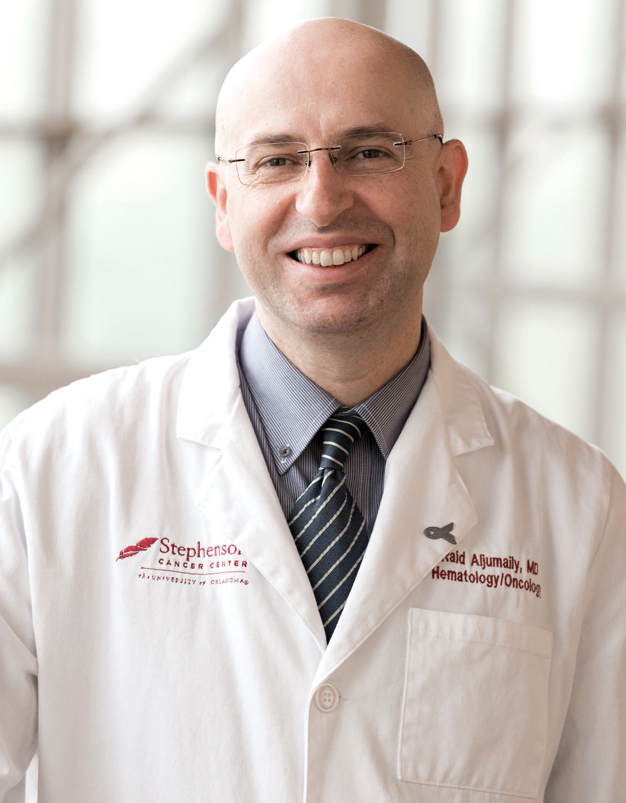
Raid Aljumaily, M.D., hematologist-oncologist at OU Health Stephenson Cancer Center at the University of Oklahoma Health Sciences Center, is serving as an investigator for a National Cancer Institute-sponsored clinical trial for stage II and III non small cell lung cancer patients. Aljumaily is also an associate professor in the section of Hematology-Oncology in the department of Medicine at the OU College of Medicine at the OU Health Sciences Center.
The study explores the safety and effectiveness of radiation therapy followed by the immunotherapy medicine, atezolizumab, in treating the lung cancer patients. A percentage of patients diagnosed with lung cancer are not candidates for surgical treatment or concurrent chemoradiation due to comorbidities including COPD, heart disease, stroke or diabetes. To date, treatment options for them have been extremely limited with no data to define the best treatment approach, according to Aljumaily. (story continues below)
The clinical trial, which is approximately halfway through enrollment, is investigating a new approach to treat these patients with hypofractionated radiation therapy, followed by atezolizumab. Hypofractionated radiation therapy involves dividing the total dose of radiation into large doses which are administered once daily. The radiation is administered over a shorter time period which is more convenient with no known decrease in efficacy.
Cancer cells ‘cover’ themselves in sheets of protein which makes them difficult to target. Atezolizumab is an immunotherapy drug that works by removing the shell that covers the cancer cells, stimulating the body’s immune system to find and remove them, and radiation treatment helps to improve that process. In the clinical trial, patients undergo hypofractionated radiation therapy five days per week for three weeks, followed by atezolizumad IV infusion repeated every 21 days up to 12 months, with a maximum of 17 cycles.
Pending results, the clinical trial could change the approach to lung cancer treatment. “Based on the results of this study, we may run an even larger study to broaden the patient population we target,” said Aljumaily. “Our hypothesis is that this combination of hypofractionated radiation followed by immunotherapy or chemotherapy will be well tolerated and will improve outcomes for this patient population, potentially leading to a new standard of care.”











